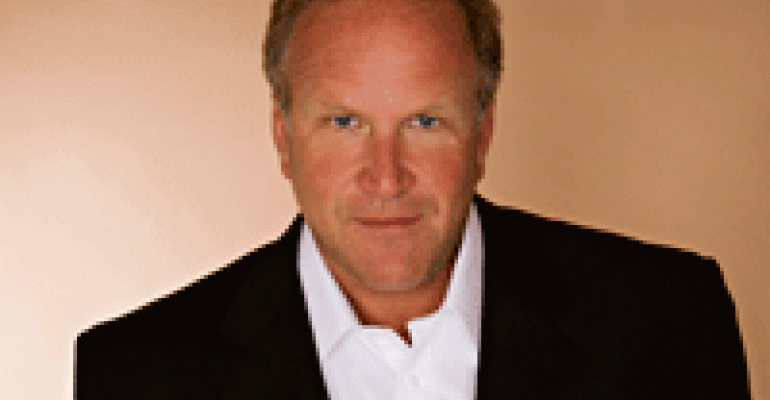
Beer and classic rock team up with American fusion cooking at Yard House, named a Restaurant Hospitality Concept of Tomorrow back in 2001. For about a decade, the chain expanded at a very deliberate pace, from three to 17 units, but growth has suddenly accelerated, and by the end of this year some 40 Yard Houses will be open. We asked founder Steele Platt and president/c.e.o. Harald Herrmann about this renewed commitment to expansion.
RH: What’s behind the accelerated pace of expansion?
Platt: In the first five years, we only opened four stores, but during those five years the team started laying down a foundation—the systems, the culture and so on. We were putting down four legs to grow from. During the next five years, we started testing waters outside the state and trying to connect some dots across the U.S. The next five years we dug deeper trenches, became analytical and got a true understanding of the model.
Herrmann: We were in Arizona, Nevada, California and Florida when the recession hit. Those also happen to be places with the worst housing bubbles. We wanted to test the brand in more markets, and we figured it made sense to diversify. Now we’re opening half and half inside and outside of California. We’re also looking into getting into the Northeast and Northwest, and where opportunities present themselves, to balance out where we are. Then we will focus on clustering in those markets to provide some synergy.
RH: What major tweaks have you made over the last decade?
Platt: I don’t think they are things most people would notice. You can compare the Yard House that opened in Long Beach, CA, 15 years ago to a new one in San Jose, and nothing is really different other than a cleaner design. Today we have more money to build a cleaner, more architecturally sound space that has more detail.
The first one has a keg room on ground floor with beer lines going underneath. In the second one it’s on the second floor, and we created beer lines overhead. We decided that was kind of cool, and it became our architectural statement.
But there are things that have changed. The menu has gone from 40 to 140 choices. The beer list has dropped from 250 to 150.
Herrmann: We have kind of grown up. We were like teenagers years ago; now we’re in college—probably the latter part of college. We have a have a saying: If it’s not broken, break it, fix it and put it back together again. That has allowed us to remain competitive. To retain our appeal to guests we need to stay innovative all the time.
The biggest change has probably been in the infrastructure. We’ve brought in experts, construction teams and financial analysts. At one point I used to wear all those hats.
RH: Has your target clientele change over the years?
Platt: Fifteen years ago we were playing the same music we are playing today: classic rock. It’s timeless in a way, and the menu changes with the palates of our customers. We reach our arms apart and target a broad market: kids, teens those in their 20s and 30s, people in their 70s who were listening to the Rolling Stones in the prime of their lives. We pick the music and make a playlist every day for the Yard Houses, and we’re starting to incorporate more ‘90s music.
RH: How do you promote the brand in new markets?
Platt: We use our website, Facebook and Twitter. We advertise in airline magazines and other publications. When we open in new markets we use marketing to publicize it.
We focus on knowing what a Yard House is immediately. It’s not like going to Denny’s. The way we’re laid out, with a big bar in the center and the music, people realize it’s going to be a fun place. People might be scared to order the food, but when they do, they say, “wow, this isn’t just a bar, it’s a restaurant.”
You can be having a beer and a bowl of wings, and the guy next to you is having a steak and a bottle of wine, and you know we’re going to deliver on both.
RH: How big do you see Yard House getting eventually?
Platt: I think they will still be building Yard Houses when I die. I envision at least 150-200. We plan to grow within our means and maintain the quality and execution. We don’t grow just to grow. But, based on our infrastructure, I think we’re ready to grow.
RH: You masterminded the Round It Up America campaign. How did that come about?
Herrmann: When the recession hit four years ago, we were very frustrated with the headlines—food banks running out of food, people going to bed hungry—and we are in the restaurant business. There is a conflict. We have done a lot of fundraising over the years—golf tournaments, galas—and that’s all good, but what we wanted to do is come up with a program that would really capitalize on our foot traffic. We see 30,000 people a day. How can we get to this audience? The idea was to ask guests to round up their checks to the nearest dollar and donate the extra to local charities. The program was always designed to include the restaurant community at large, not just Yard House. We went through a lot of testing, but by the end of the first year we raised $250,00 with 25 restaurants participating. The average roundup amount is 80 cents.
This grew very much organically, so many of the partners are regional. We have multiple chains on standby waiting for us to finalize an agreement to hand it all off to another agency and take this the national stage.





